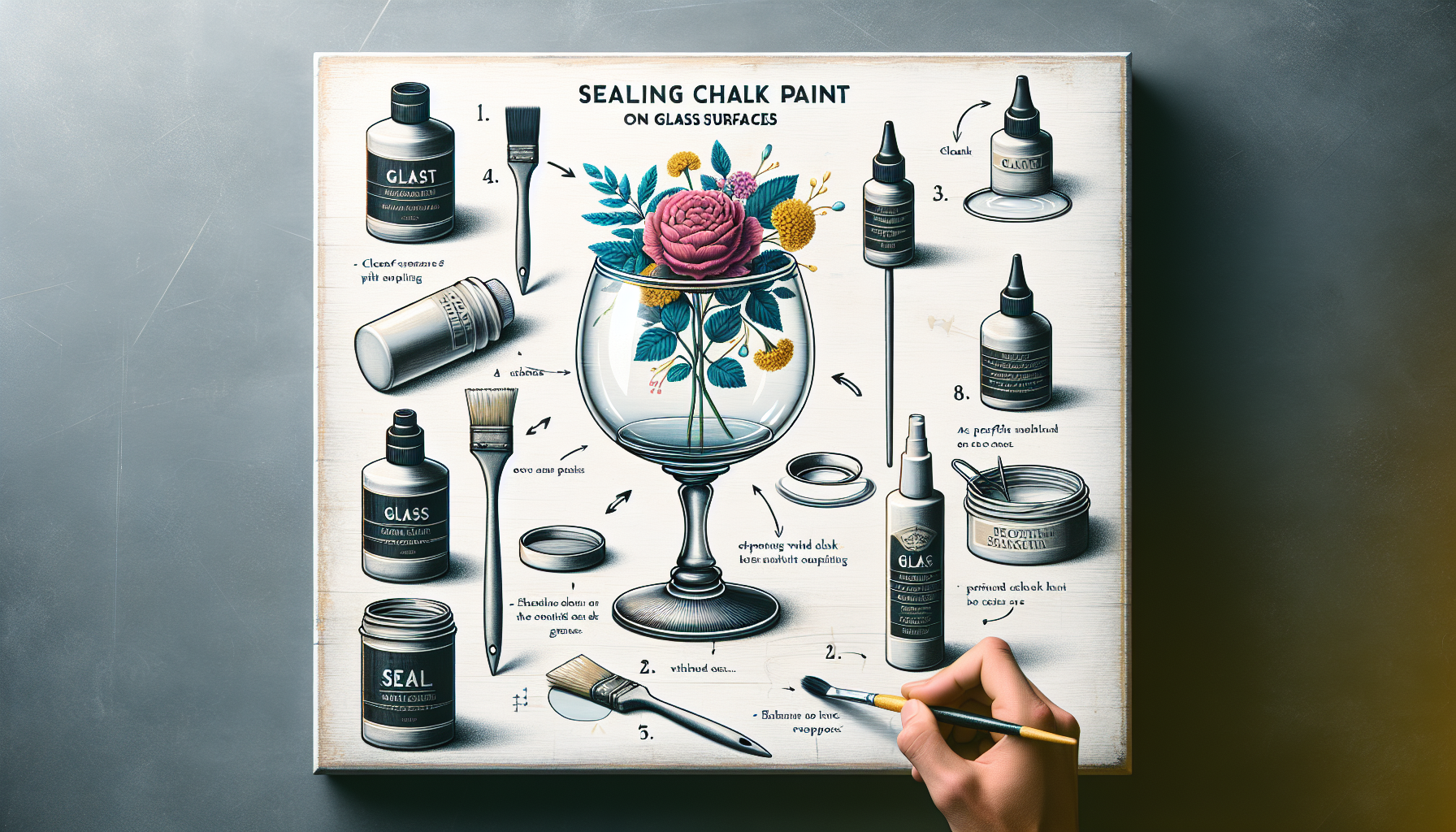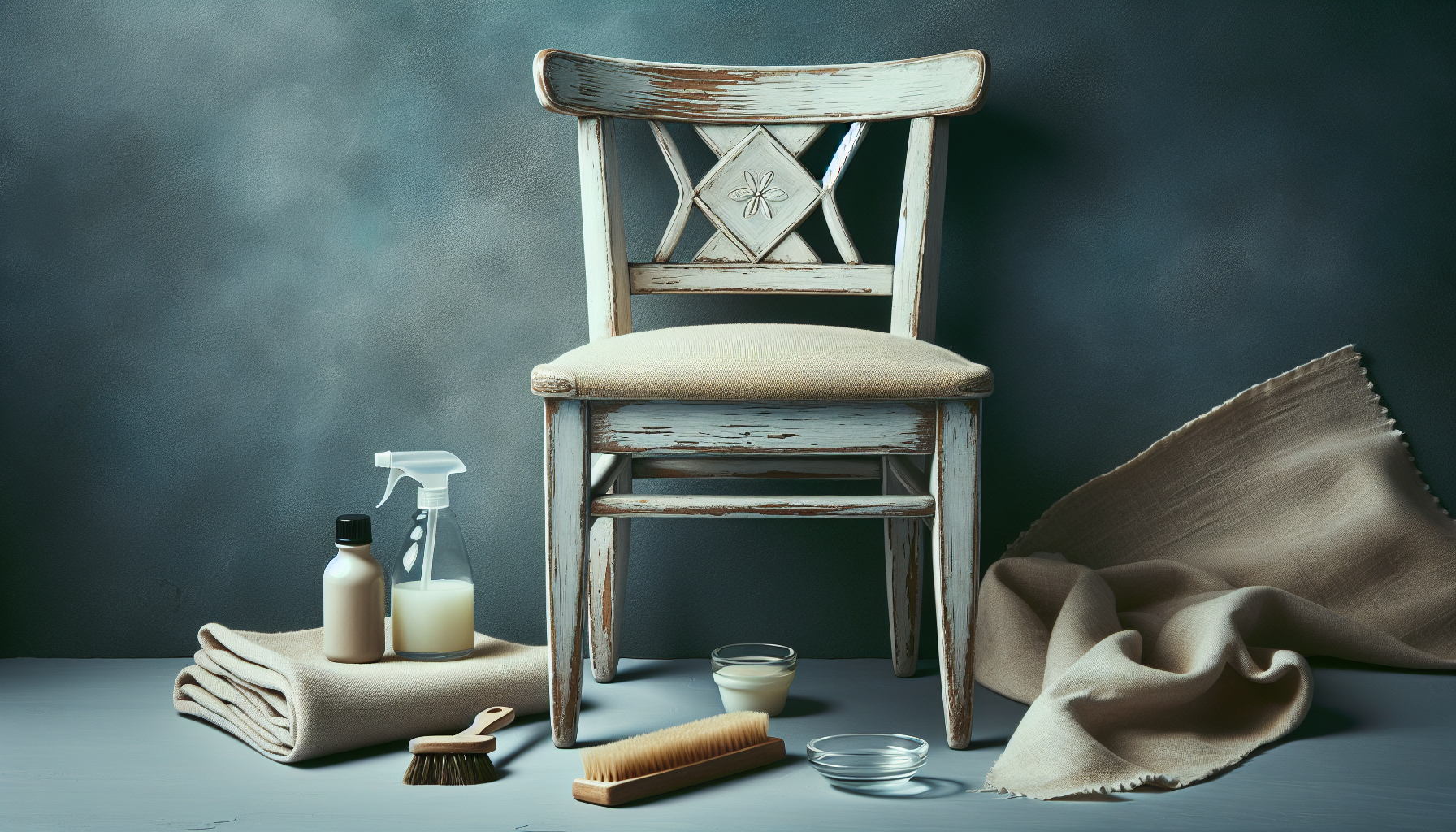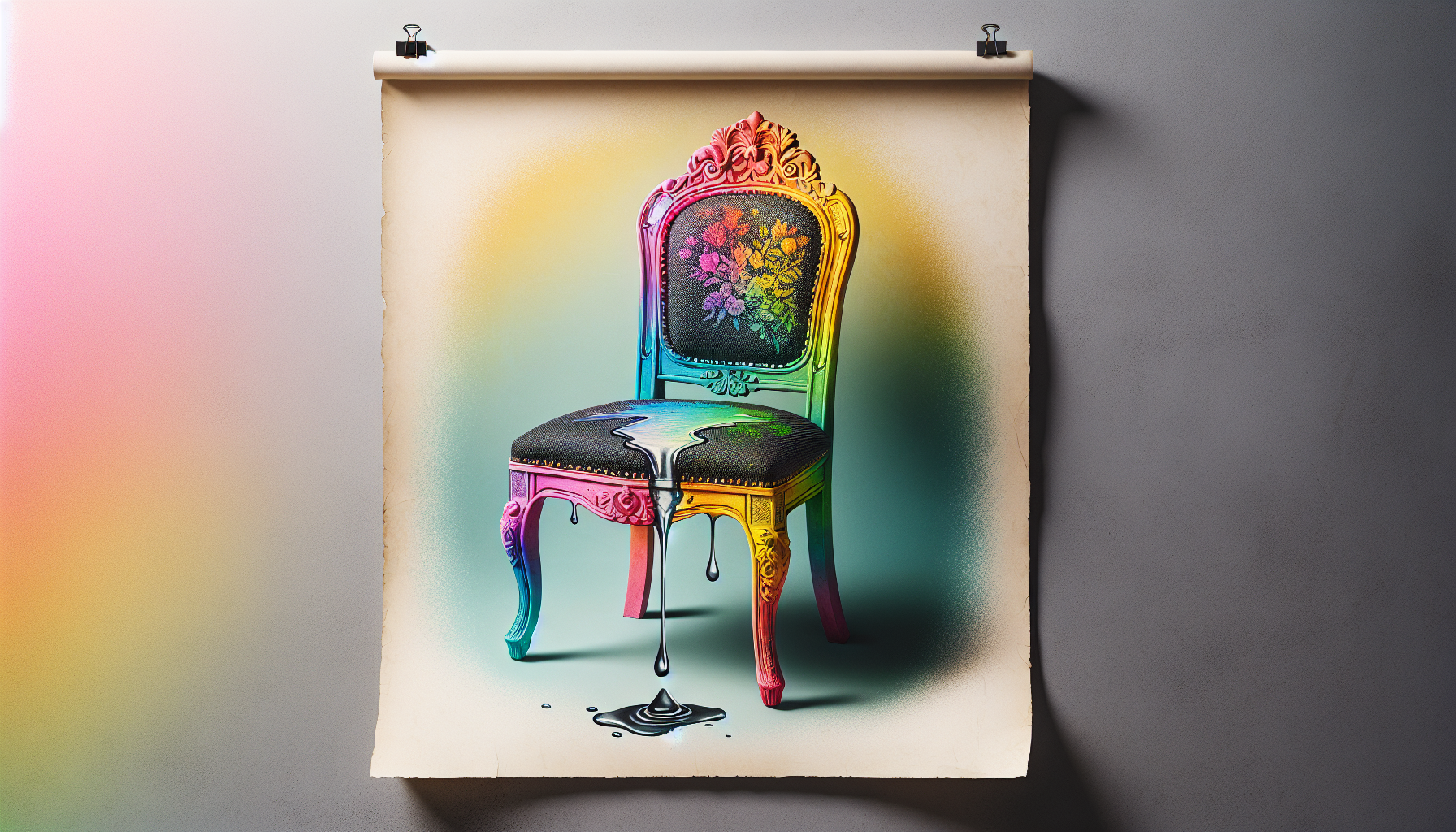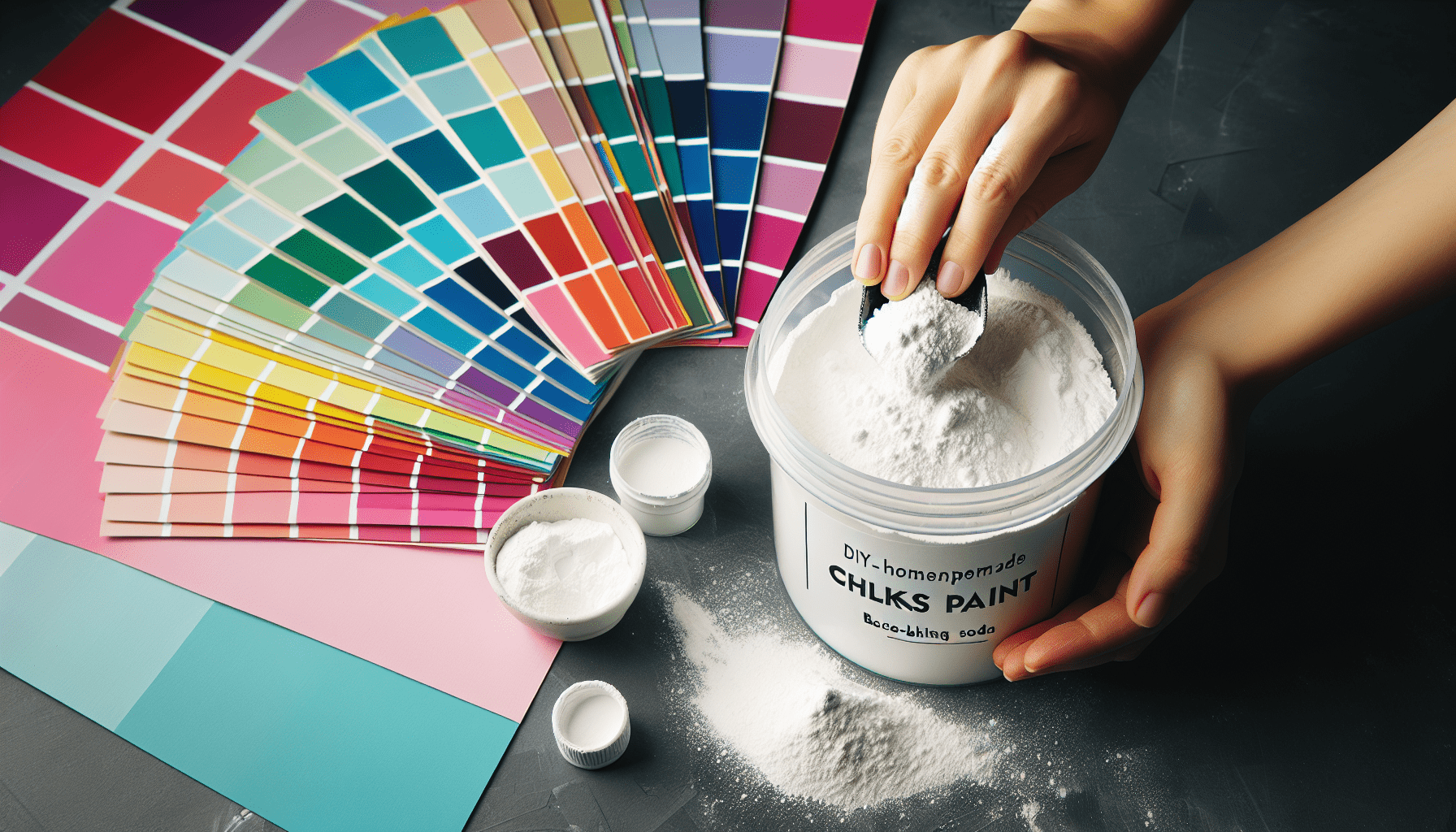If you have ever wondered how to effectively preserve your chalk paint masterpiece on glass, this article will provide you with a straightforward guide. By following these easy steps, you will be able to ensure the longevity of your chalk paint while also enhancing its vibrant colors. From selecting the appropriate sealant to applying it correctly, this article offers comprehensive instructions that will help you achieve a professional and polished finish on your glass surfaces. Whether you are adding a decorative touch to your windows or revamping glass jars for a stylish storage solution, sealing chalk paint on glass has never been easier with these valuable tips.
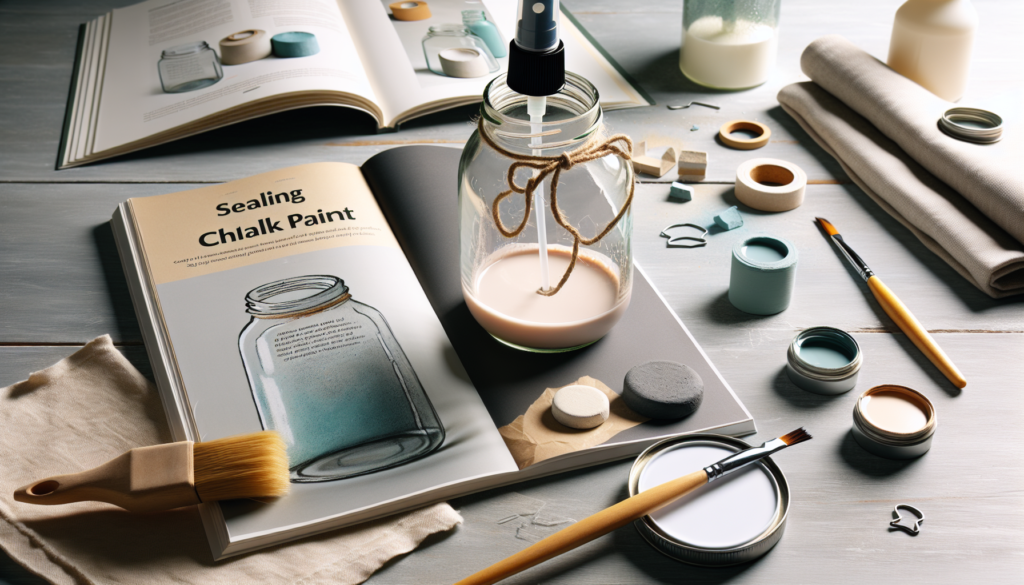
Preparation
Before you begin the process of sealing chalk paint on glass, it is important to gather all the necessary materials. To ensure a successful outcome, you will need the following:
Gather Materials
- Chalk paint: Choose a high-quality chalk paint in your desired color. Ensure that the paint is specifically designed for glass surfaces.
- Sealant: Select a sealant that is compatible with chalk paint and glass. There are various options available, including polyurethane, wax, and specialized glass sealants.
- Brushes or sprayers: Depending on your preferred application method, gather brushes or sprayers suitable for applying the sealant.
- Clean cloth: Prepare a clean and lint-free cloth for wiping the glass surface.
- Masking tape: If you plan to seal specific areas on the glass, use masking tape to create clean and precise lines.
- Safety goggles and gloves: Protect yourself by wearing safety goggles and gloves to prevent any potential skin or eye irritation from the sealant.
Once you have gathered all the necessary materials, it’s crucial to clean the glass surface thoroughly before proceeding to the next step.
Clean the Glass Surface
Cleaning the glass surface ensures that it is free from any dirt, dust, or grease, which can affect the adhesion of the chalk paint and sealant. Follow these steps to clean the glass surface effectively:
- Fill a bucket or sink with warm water and add a few drops of dish soap.
- Dip a clean cloth or sponge into the soapy water and wring out any excess liquid.
- Wipe the entire glass surface, paying close attention to any areas that may have accumulated dirt or grease.
- Rinse the cloth or sponge with clean water and wipe away any soap residue from the glass.
- Dry the glass surface thoroughly with a clean cloth or allow it to air dry completely.
Once the glass surface is clean and dry, you can proceed to choose the right sealant for your project.
Choosing the Right Sealant
Selecting the appropriate sealant is crucial to ensure the longevity and durability of your chalk paint on glass. Consider the following factors when choosing a sealant:
Consider the Paint Type
Different types of chalk paint may require specific types of sealants. Some chalk paints are water-based, while others are oil-based. It is important to check the type of paint you used and choose a sealant that is compatible with it.
Read Product Labels
When selecting a sealant, always read the product labels carefully. Look for sealants that are specifically designed for glass surfaces and compatible with chalk paint. Pay attention to any warnings or special instructions provided by the manufacturer.
Select an Appropriate Sealant
There are several sealant options available for sealing chalk paint on glass. Here are some common choices:
-
Polyurethane: Polyurethane sealants provide a strong and durable finish, protecting the chalk paint from scratches and wear. They are available in both matte and glossy finishes. Ensure that the polyurethane sealant you choose is suitable for glass surfaces.
-
Wax: Wax sealants can provide a soft and natural-looking finish, adding a touch of depth and subtle sheen to the chalk paint. Apply the wax sealant using a clean cloth or a wax brush for best results.
-
Glass sealants: Some manufacturers offer specialized glass sealants that are specifically designed for use on glass surfaces. These sealants provide a clear and transparent finish while offering excellent adhesion and durability.
Consider your desired finish, level of protection required, and the compatibility with your paint when selecting the sealant.
Application Methods
Once you have chosen the right sealant for your chalk paint on glass project, it’s time to consider the application method. The two most common methods are brush application and spray application.
Brush Application
Brush application is a popular choice for sealing chalk paint on glass, as it allows for greater control and precision. Here’s how to apply the sealant using a brush:
- Dip a high-quality brush into the sealant, ensuring that it is evenly coated but not overloaded with product.
- Start at one corner of the glass surface and apply the sealant in long, smooth strokes, moving from one edge to the other.
- Ensure that the brush strokes are even and consistent throughout the application process to achieve a uniform finish.
- Take extra care when sealing the edges and corners of the glass to prevent any drips or pooling of the sealant.
- Allow the first coat to dry according to the manufacturer’s instructions before applying additional coats if needed.
Spray Application
Spray application can provide a more even and efficient coverage when sealing large glass surfaces or when aiming for a smooth and seamless finish. Here’s how to apply the sealant using a spray:
- Prepare a well-ventilated area or consider applying the sealant outdoors to avoid inhaling any fumes.
- Start by shaking the spray sealant can thoroughly according to the manufacturer’s instructions.
- Hold the can approximately 8-12 inches away from the glass surface and spray in long and even strokes, overlapping each pass slightly.
- Ensure that the spray is applied evenly, avoiding any excessive build-up or pooling of the sealant.
- Allow the first coat to dry according to the manufacturer’s instructions before applying additional coats if needed.
Choose the application method that best suits your project and personal preference.
Applying the Sealant
When applying the sealant to your chalk paint on glass, it is essential to follow the manufacturer’s instructions and take necessary precautions to achieve the best results.
Follow the Manufacturer’s Instructions
Each sealant may have specific instructions regarding application, drying time, and curing. It is crucial to carefully read and follow the instructions provided by the manufacturer to ensure a successful outcome.
Work in a Well-Ventilated Area
Sealants may contain fumes or harmful chemicals, so it is important to work in a well-ventilated area. Open windows, use fans for air circulation, or consider applying the sealant outdoors. This will help reduce the risk of inhalation and ensure a safer working environment.
Apply Multiple Coats if Needed
Depending on the level of protection and finish you desire, multiple coats of sealant may be necessary. Allow each coat to dry completely before applying the next, following the recommended drying time provided by the manufacturer. This will ensure that the sealant adheres properly and provides the desired level of protection and durability.
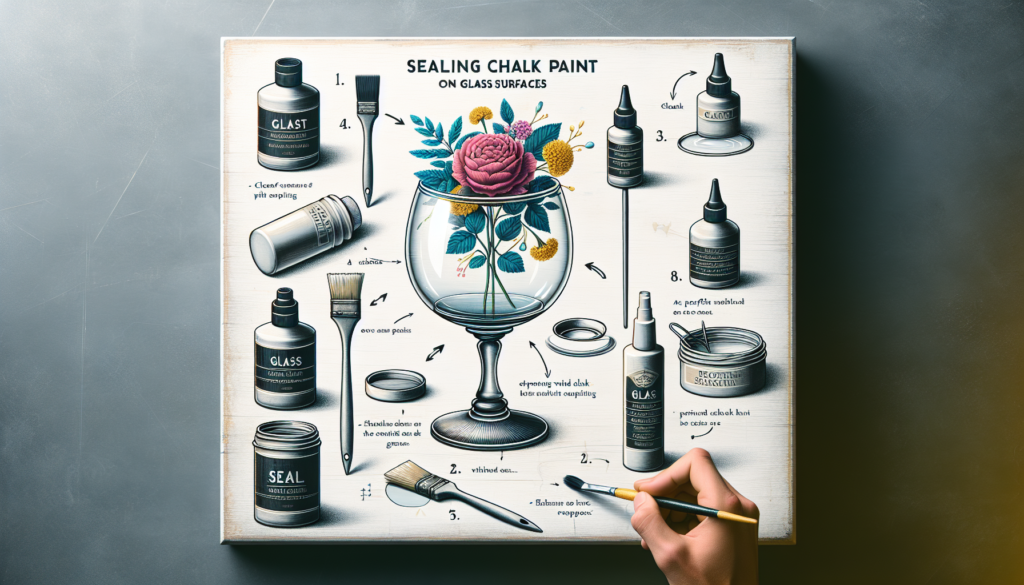
Drying and Curing
After applying the sealant to your chalk paint on glass, it is crucial to allow sufficient drying time and cure the sealant properly for optimal results.
Allow Sufficient Drying Time
The drying time for the sealant will vary depending on the product and environmental conditions. It is essential to refer to the manufacturer’s instructions for the recommended drying time. Avoid touching or handling the sealed surface until it is completely dry to prevent smudging or damage to the finish.
Cure the Sealant
Curing is the process of allowing the sealant to fully harden and reach its maximum durability. While the drying time may be relatively short, curing can take several days or even weeks. Follow the manufacturer’s instructions for the recommended curing time before subjecting the sealed glass to regular use or cleaning.
Caring for Sealed Glass
Once the sealant has dried and cured, it is important to follow certain care guidelines to maintain the integrity and longevity of the sealed chalk paint on glass.
Wait for Full Cure
Before subjecting the sealed glass to regular use or cleaning, it is advisable to wait for the sealant to fully cure. This will ensure that the sealant has hardened and offers maximum protection against scratches, moisture, and other potential damage.
Avoid Abrasive Cleaners
When cleaning the sealed glass, avoid using abrasive cleaners or harsh chemicals that may cause damage to the sealant or paint. Instead, use a gentle glass cleaner or a mixture of mild dish soap and water. Apply the cleaning solution with a soft cloth and gently wipe the surface in a circular motion.
Hand Wash Only
To preserve the integrity of the sealed chalk paint on glass, avoid subjecting it to dishwasher or machine washing. Instead, hand wash the glass gently with mild dish soap and warm water. Rinse thoroughly and dry with a clean cloth to prevent water spots.
Handle with Care
Although the sealant provides additional protection, it is still essential to handle the sealed glass with care. Avoid dropping or banging the glass, as this may cause damage to the sealant or paint. Use caution when placing objects on the sealed glass to prevent scratches.
Removing or Reapplying the Sealant
Over time, you may need to remove or reapply the sealant on your chalk paint on glass. Here are some steps to follow:
Detecting Sealant Damage
Inspect the sealed glass surface regularly for any signs of damage or wear. Look for cracks, peeling, or discoloration, as these may indicate that the sealant needs to be removed and reapplied.
Removing the Sealant
To remove the sealant, start by gently scraping it off the glass surface using a plastic scraper or razor blade. Take care not to scratch or damage the glass. Once most of the sealant is removed, clean the surface thoroughly with glass cleaner or a mixture of vinegar and water. Dry the glass completely before reapplying a new sealant.
Reapplying the Sealant
After removing the old sealant and cleaning the glass surface, follow the steps mentioned earlier to apply a fresh coat of sealant. Ensure that the surface is clean and dry before applying the new sealant. Allow the sealant to dry and cure according to the manufacturer’s instructions.
Common Issues and Troubleshooting
When sealing chalk paint on glass, it is possible to encounter some common issues. Here are a few troubleshooting tips for two common problems:
Bubbling or Uneven Application
If you notice bubbling or uneven application of the sealant, it may be due to excessive buildup or inadequate drying time between coats. To fix this issue, gently sand the affected area with fine-grit sandpaper and clean it with a soft cloth. Then, reapply a thin and even coat of sealant, allowing it to dry completely before applying additional coats if needed.
Yellowing or Discoloration
Over time, certain sealants may experience yellowing or discoloration, particularly when exposed to sunlight or harsh environmental conditions. To address this problem, consider using a sealant that offers UV protection or choose a different sealant with better durability. If the sealant has yellowed significantly, it may be necessary to remove and reapply the sealant.
Alternative Methods to Seal Chalk Paint on Glass
Apart from using traditional sealants, there are alternative methods to seal chalk paint on glass. Here are two popular options:
Using a Clear Wax
Applying a clear wax over the chalk paint on glass can add a protective layer and enhance the matte finish. Use a clean cloth or wax brush to apply the wax in a thin and even layer. Allow it to dry and cure according to the manufacturer’s instructions. Repeat the application process if additional protection is desired.
Using a Clear Polyurethane Varnish
A clear polyurethane varnish can also be used to seal chalk paint on glass, offering a durable and glossy finish. Apply the varnish using a brush or sprayer, following the manufacturer’s instructions. Allow each coat to dry completely before applying additional coats if necessary.
Conclusion
Sealing chalk paint on glass is a critical step in preserving its beauty, durability, and longevity. By following the preparation, application, and care guidelines outlined in this article, you can achieve a professional and long-lasting seal on your glass surfaces. Remember to gather the necessary materials, clean the glass surface, choose the right sealant, and select the appropriate application method. Additionally, take the time to allow the sealant to dry and cure properly before using or cleaning the sealed glass. With proper care and maintenance, your chalk paint on glass will retain its vibrant colors and beautiful finish for years to come.
